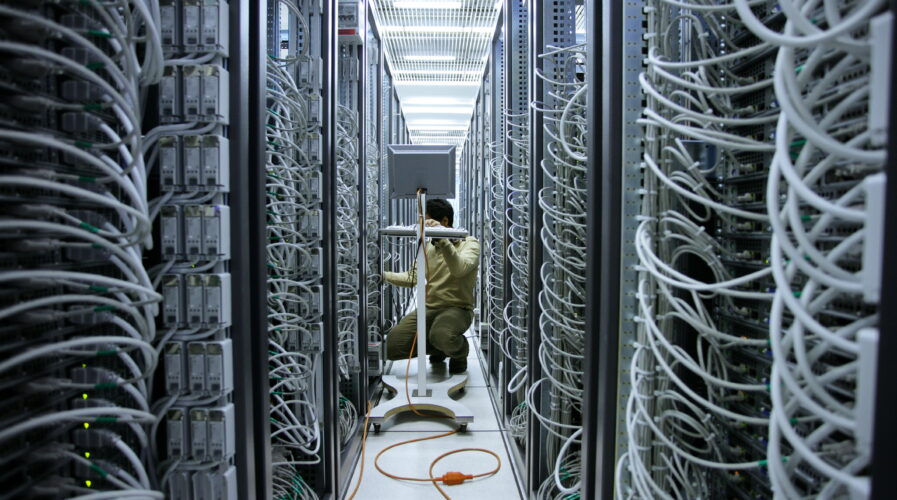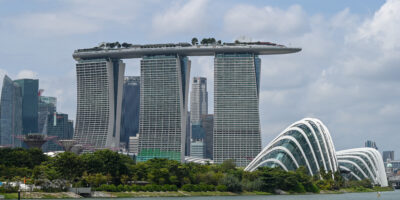
(Source – Shutterstock)
A blueprint for data center sustainability amid an evolving regulatory landscape
Article by Michael Kurniawan, Business Vice President, Secure Power Division, Singapore, Malaysia & Brunei, Schneider Electric
The IT sector has a long history of being one of the most heavily regulated industries. From electrical and safety standards to ensuring that equipment can be recycled, compliance with this constantly evolving regulatory landscape is a major challenge for industry players including data center operators. With the criticality of data centers gaining attention in headlines, and as discussions around how to address the current climate crisis pick up speed, data center operators can expect to be impacted by the evolving regulations and sustainability goals of a country.
Today, data centers represent 1-2% of total global electricity consumption. As the acceleration in digital transformation and automation continues all around us, we can expect the demand for more IT compute capacity and more data centers to increase over time. The resource consumption and carbon footprint of data centers, however, have attracted the attention of governments and climate “watchdog” organizations.
The fact is, data center sustainability remains a work in progress. The lack of environmental awareness, lack of investment, and lack of collaboration from stakeholders has often been cited as key challenges to making data centers more sustainable. This has, in turn, prompted lawmakers to act and review ways to curb the environmental impact of data centers through regulation.
Evolving Regulations in Building a Greener Future

Michael Kurniawan, Business Vice President, Secure Power Division, Singapore, Malaysia & Brunei
In Singapore for example, a moratorium on new data centers was put in place in 2019, while the government conducted its review of how to grow the industry in a more sustainable manner. The government has since highlighted that Singapore plans to be more selective in its data center investments.
Most recently in March 2022, Singapore’s Senior Minister of State for Communications and Information, Dr. Janil Puthucheary acknowledged how data centers are “vital nodes in the flow of digital traffic”, powering many applications and services each day, including e-commerce transactions. However, he flagged that data centers are intensive users of water and electricity. Given Singapore’s limited resources, there is, therefore, a need to develop data centers sustainably. In line with this, a call for application will be made in the second quarter of this year, to facilitate the growth of greener data centers packed with energy-efficient and decarbonization technologies.
With the rapid acceleration to a more automated and more digital world, efficient and reliable data centers are at the heart of the green future. As our lives are increasingly online and our digital footprint expands, so too will the need for greener data centers. Proactively building greener data centers in accordance with government policies will become critical to ensuring that the carbon footprint from data centers is well-managed.
A five-step sustainability blueprint for a Green Data Center
As data center operators try to navigate the evolving regulations, while keeping up with an increase in demand generated by our digital-first world, there are tangible steps that they can take to achieve a holistic environmental sustainability approach.
- Set a bold actionable strategy: Use a data-driven consultation approach to create an actionable strategy and reach climate and sustainability ambitions. Ensure you are leveraging data for optimization, analytics, and reporting. While government regulations set the minimum bar for sustainability compliance within data centers, climate commitments are becoming increasingly expected by employees, customers, and investors. For example, while a goal of carbon neutrality was once a differentiator, we must recognize the potential to drive even greater impact with carbon negative operations.
- Implement efficient data center designs: Utilize an architectural approach to create customized, efficient, repeatable, serviceable, vendor-agnostic data center designs, keeping in mind compliance, transparency, and higher environmental performance of products.
- Drive efficiency in operations with software and digital services to enable remote monitoring capabilities: Optimize the lifespan and efficiency of your systems by defining a clear strategy for maintenance and modernization to optimize the lifespan inclusive of recycling services for end-of-life products to ensure circular economy best practices.
- Buy renewable energy (PPA and Onsite): Explore a custom renewable procurement strategy that includes microgrids, PPAs, VPPAs, energy-as-a-service, and EACs. For example, DuPont has recently signed a virtual power purchase agreement (VPPA) with a subsidiary of NextEra Energy Resources LLC for new wind energy in Texas. The VPPA will deliver the equivalent of 135 MW of new wind power capacity or approximately 528,000 MWh of renewable electricity annually and will address DuPont’s Acting on Climate goal of reducing absolute greenhouse gas (GHG) emissions by 30%, including sourcing 60% of electricity from renewable energy, by 2030, and achieving carbon neutrality by 2050.
- Decarbonize supply chains: Evaluate your Scope 3 footprint, identify and execute strategies to meet decarbonization objectives, utilize digital performance tracking and reporting for your decarbonization program. For example, major oil and gas company Chevron had its board vote to reduce Scope 3 emissions on an absolute basis, reducing the total by 40% by 2030.
Sustainable business practices are on track to becoming standard business, and some may argue they already are. Besides being the best path towards addressing the most pressing issue of our time, they’re often the best solution from a business standpoint. Data center operators should therefore adapt to changing government regulations, and take it as a timely opportunity to embrace a greener future and push the boundaries of their sustainability commitments.
The views in this article are that of the author and do not reflect the views of Tech Wire Asia
READ MORE
- Ethical AI: The renewed importance of safeguarding data and customer privacy in Generative AI applications
- How Japan balances AI-driven opportunities with cybersecurity needs
- Deploying SASE: Benchmarking your approach
- Insurance everywhere all at once: the digital transformation of the APAC insurance industry
- Google parent Alphabet eyes HubSpot: A potential acquisition shaping the future of CRM


